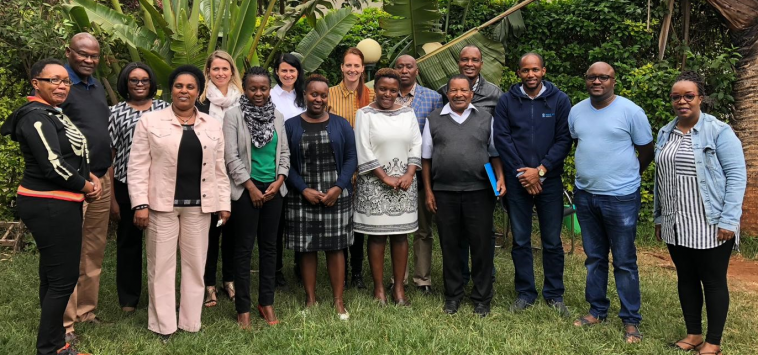Reducing Unsafe Abortion in Kenya: Where are We?
A court ruling has been made in support of reducing unsafe abortion in Kenya.

A stakeholder meeting is held in Nairobi organised by the Kenya Obstetrical and Gynaecological Society (KOGS).
JMM* was just 14 years old and in her second year of Secondary School when she was sexually assaulted by an older man. When she missed her period twice she realized that she was pregnant. Being fearful of the pregnancy being discovered and not knowing what to do, she confided in her friend who told her that she knew someone who would take care of it.
The practitioner was in their local town behind a shop labelled Chemist. He gave her some medicine, but nothing happened. She went back and this time he inserted some cold metal instruments, and when JMM went home she started bleeding heavily, vomiting and having a fever. When she was taken to a nearby hospital, her complications of excessive bleeding and sepsis were too severe to be treated there and she was referred to another hospital and admitted to the critical care unit. There, she was diagnosed with kidney failure requiring dialysis thus yet again referred, this time to the national referral hospital in Nairobi. She had surgery and was treated for chronic kidney disease. She remained in poor health until she died, in June, 2018.
The magnitude of the problem
JMM’s story is sadly not rare. Unsafe abortion in Kenya is among the highest in Africa. Maternal mortality is high at about 6,000 deaths per year, 17% of them from complications of unsafe abortion. Most women who go to hospital after unsafe abortion have moderate or severe complications, requiring specialized treatment and having lasting health effects. The costs of treatment for unsafe abortion can vary greatly. In a country where 2 in 5 people live on less than 200 shillings a day, the cost can be a barrier to getting the care they need.
Due to stigma, information on safe abortion cannot be shared freely and ignorance is rampant. Women who need abortion are also under pressure to keep it secret, increasing the pressure to turn to unqualified persons in unsafe environments. Stigma and ignorance of the law among qualified healthcare providers also causes discrimination, harassment and poor quality of care for both abortion and post abortion care patients.
The case
One of the drivers of unsafe abortion has been the lack of clarity and consistency in the legal and policy context. JMM’s story led to a court case, the outcomes of which could bring about changes to support access to safe abortion within the law in Kenya.
Kenya’s Constitution was changed in 2010 to expand the situations under which abortion could be provided legally, including to situations of rape.
However, the Standards and Guidelines for Reducing Morbidity and Mortality from Unsafe Abortion that were formulated in response to the changes in the law were withdrawn. Healthcare workers were prohibited from receiving training for, and offering abortion care. This meant that women and girls such as JMM seeking to terminate pregnancies that should have been allowed under the law resorted to unsafe abortions, with disastrous results.
In 2015, JMM’s story was published in a local daily newspaper. A coalition of civil society groups led by the Center for Reproductive Rights and the Federation of Women Lawyers in Kenya sued the Ministry of Health and the Attorney General on behalf of JMM and her mother. The case was referred from the initial 3 judge bench to a 5 judge bench due to the sensitivity of the matter.
The Ruling
In their judgment, the judges stated that letter withdrawing the guidelines was unlawful and unconstitutional, therefore null and void from the start. The Ministry of Health was ordered to reinstate the standards and guidelines and train and support health care providers in the provision of abortion for women who are deemed to need it to save the life or health of the woman as envisaged in the constitution and defined by the Health Act, 2017. The Court ruled that health was defined as a state of complete physical, mental and social well-being and not merely the absence of disease or infirmity.
The ruling was made in June, 2019, one year after JMM’s death.
The vision
FIGO partnering with the Kenya Obstetrical and Gynaecological Society (KOGS) has initiated a project to advocate for reducing unsafe abortion in Kenya. The multi-pronged effort will bring together organizations with the shared goal of ensuring access to safe abortion is provided within the law, for example working with healthcare professionals to reduce stigma and increase knowledge of the legal context. The project comes at an opportune time when Kenyan communities need all the help they can get to save women from death and maiming from unsafe abortion. When JMM was in hospital she said that she regretted what happened to her, but she was angry that it would happen to other girls if nothing changed.
Let us all heed her call to save Kenyan girls and women. The ruling has opened the door to safe abortion within the law in Kenya. Will the country walk through?